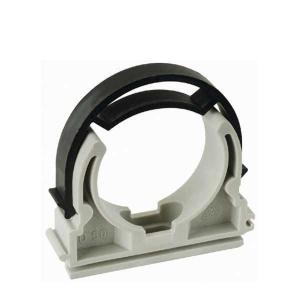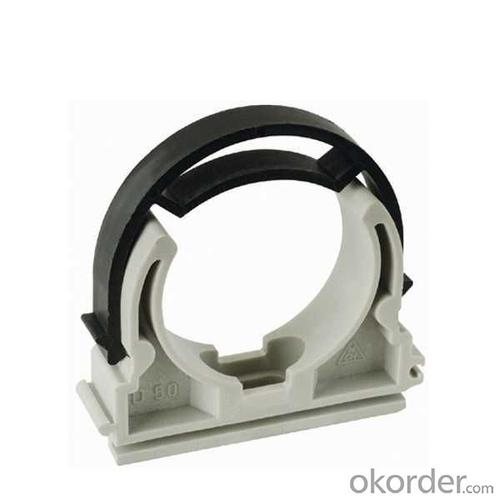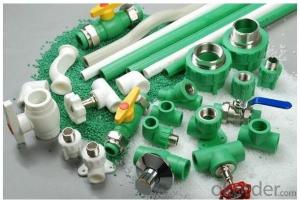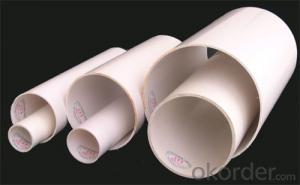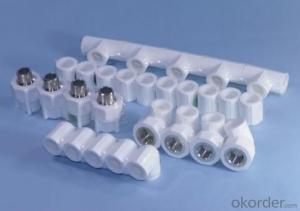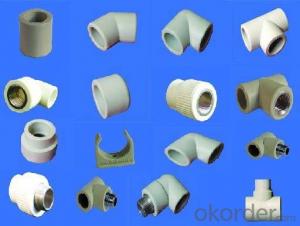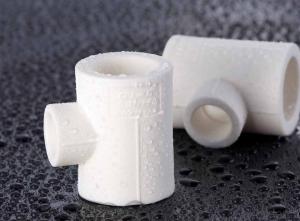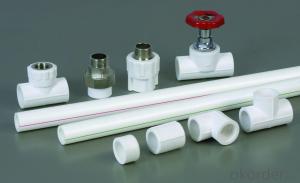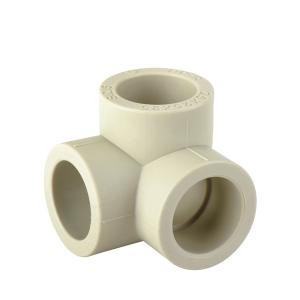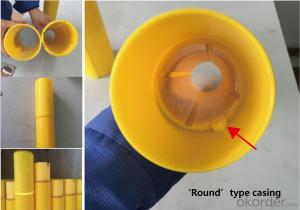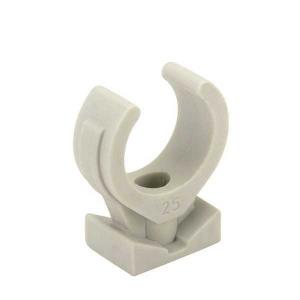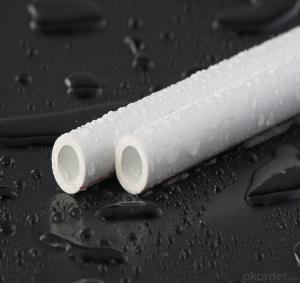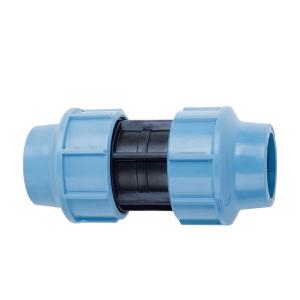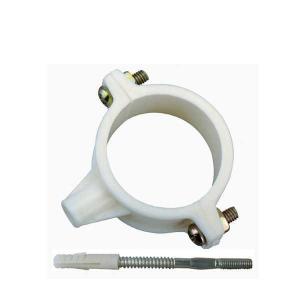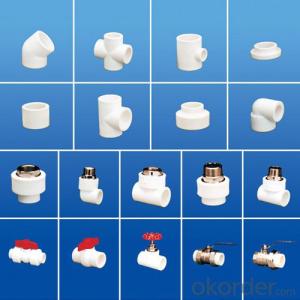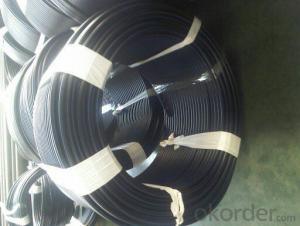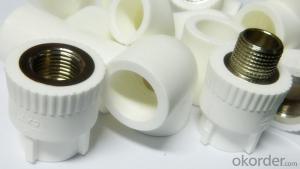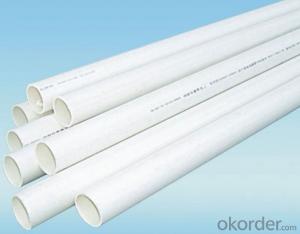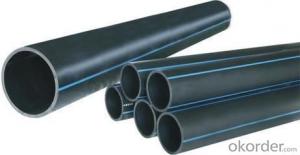High Quality Plastic Clip for Plumbing With Plastic Pipe and Fittings
- Loading Port:
- Ningbo
- Payment Terms:
- TT or LC
- Min Order Qty:
- 1000 watt
- Supply Capability:
- 100000 watt/month
OKorder Service Pledge
Quality Product, Order Online Tracking, Timely Delivery
OKorder Financial Service
Credit Rating, Credit Services, Credit Purchasing
You Might Also Like
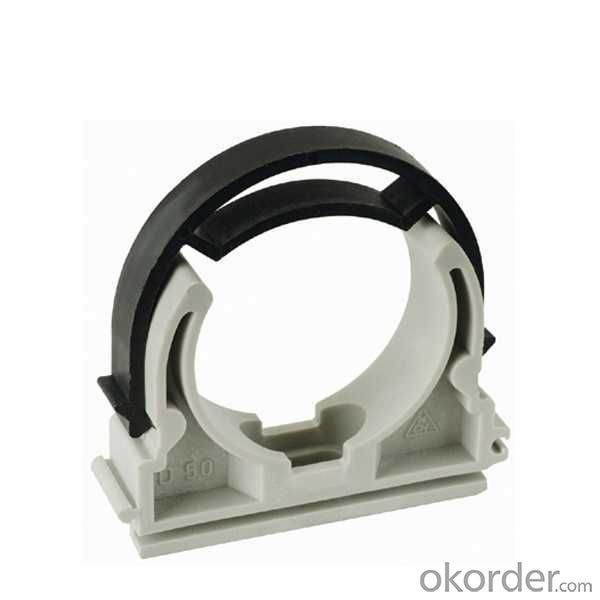 ppr fittings HYOSUNG PPR raw materials standard:DIN8077-8078 GB/T18742.3-2002 PN25 White grey green color
ppr fittings HYOSUNG PPR raw materials standard:DIN8077-8078 GB/T18742.3-2002 PN25 White grey green color
1.Material:Random Polypropylene(Hyosung R200P);
2.ISO9001&ISO14001;
3.Standard:GB/T 18742.3-2002, DIN8077/8078;
4.OEM also ok
- Q: Can plastic pipe fittings be used for HVAC systems?
- Yes, plastic pipe fittings can be used for HVAC systems. Plastic fittings, such as PVC or CPVC, are often used in HVAC applications due to their corrosion resistance, durability, and ease of installation. However, it is important to ensure that the plastic materials and fittings used are compatible with the specific HVAC system and meet the necessary codes and standards.
- Q: Are plastic pipe fittings resistant to sewer gases?
- Yes, plastic pipe fittings are generally resistant to sewer gases. They are designed to be airtight and are made from materials that can withstand exposure to various chemicals and gases commonly found in sewer systems.
- Q: How do plastic pipe fittings compare to CPVC fittings?
- Plastic pipe fittings and CPVC fittings have some similarities, but they also have notable differences. Plastic pipe fittings, which are usually made of PVC (Polyvinyl Chloride), are known for their durability and affordability. They are widely used for various applications, including plumbing, irrigation, and drainage systems. Plastic fittings are resistant to corrosion, chemicals, and UV radiation, making them suitable for both indoor and outdoor installations. However, they may not handle high temperatures as well as CPVC fittings. On the other hand, CPVC (Chlorinated Polyvinyl Chloride) fittings are specifically designed for hot water applications. They can withstand higher temperatures than plastic fittings without losing their structural integrity. CPVC fittings offer excellent heat resistance, making them ideal for hot water supply lines in residential and commercial buildings. However, compared to plastic fittings, CPVC fittings can be slightly more expensive. In summary, while plastic pipe fittings are versatile and cost-effective, CPVC fittings are better suited for hot water applications where higher temperatures are involved. The choice between the two depends on the specific requirements of the plumbing project.
- Q: Can plastic pipe fittings be used for fuel transfer systems?
- No, plastic pipe fittings should not be used for fuel transfer systems. Plastic is not compatible with fuel and can degrade, leak, or cause a potential fire hazard. It is recommended to use fittings made from materials specifically designed for fuel transfer, such as metal or specialized fuel-resistant plastics.
- Q: How do plastic pipe fittings handle soil movement and settlement?
- Plastic pipe fittings have the ability to handle soil movement and settlement quite effectively. Due to their flexible nature, they can accommodate slight shifts in the soil without causing significant damage to the fittings or the pipes. Additionally, plastic fittings are resistant to corrosion and rust, which further enhances their durability and ability to withstand soil movement.
- Q: Are plastic pipe fittings resistant to extreme weather conditions?
- Yes, plastic pipe fittings are generally resistant to extreme weather conditions. They are designed to withstand a wide range of temperatures, from freezing cold to scorching heat. Additionally, they are often UV resistant, meaning they can withstand prolonged exposure to sunlight without degradation. However, it is important to note that the specific type and quality of plastic used in the fittings can affect their overall resistance, so it is advisable to consult the manufacturer's specifications for each specific fitting.
- Q: Plastic pipe fittings and cast iron pipe fittings are not the same technical field
- Because of its light weight, corrosion resistance, beautiful appearance, no bad smell, easy processing, convenient construction and other characteristics, it has been more and more widely used in building engineering. Mainly used for building construction of the water supply system, piping, drainage, exhaust and sewage sanitary pipe, underground drainage pipe system, storm pipe and wire installation supporting the use of threading pipe.
- Q: Can plastic pipe fittings be used in sewage treatment systems?
- Yes, plastic pipe fittings can be used in sewage treatment systems. They are commonly used due to their durability, resistance to corrosion, and ease of installation. Additionally, plastic pipe fittings are often more cost-effective than other materials and can withstand the harsh chemicals and conditions found in sewage treatment systems.
- Q: What materials are plastic pipe fittings made of?
- Plastic pipe fittings are commonly made from materials such as PVC (polyvinyl chloride), CPVC (chlorinated polyvinyl chloride), PEX (cross-linked polyethylene), and PP (polypropylene).
- Q: How do plastic pipe fittings compare to PVC pipe fittings?
- Plastic pipe fittings and PVC pipe fittings are essentially the same thing. PVC (Polyvinyl Chloride) is a type of plastic commonly used for pipe fittings due to its durability, strength, and resistance to corrosion. So, plastic pipe fittings and PVC pipe fittings are often used interchangeably, and there is no significant difference between them.
Send your message to us
High Quality Plastic Clip for Plumbing With Plastic Pipe and Fittings
- Loading Port:
- Ningbo
- Payment Terms:
- TT or LC
- Min Order Qty:
- 1000 watt
- Supply Capability:
- 100000 watt/month
OKorder Service Pledge
Quality Product, Order Online Tracking, Timely Delivery
OKorder Financial Service
Credit Rating, Credit Services, Credit Purchasing
Similar products
Hot products
Hot Searches
Related keywords
